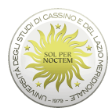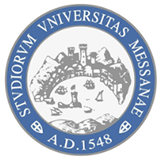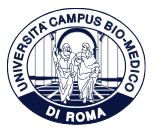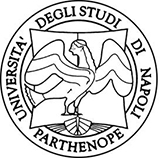Introduction
Parthenope University of Naples is a public university in Naples, Italy. Its predecessor was Regio Istituto Superiore Navale, which was established in 1919. It was originally a higher education institution focusing on marine research. It was officially renamed Parthenope University of Naples in 1999 and added several departments.
Overview
Number of students: Currently, there are about 30,000 registered students, including 6,026 undergraduates and 2,344 masters/graduate students. International students account for a small proportion, and the proportion of international students in undergraduates and graduate students is about 2%.
Number of faculty and staff: No exact public data is available.
History
In 1919, at the request of Vice Admiral Leonardi Cattolica, the Regio Istituto Superiore Navale was established to study the ocean from the perspectives of marine physics, biology, transportation, trade and cultural exchange, to promote the development of related sciences and solve marine economic problems.
In the 1930s, the institution was further expanded and improved, renamed Istituto Universitario Navale, and played a strategic role during the Fascist period. Its experts calculated the precise optimal routes for the transatlantic flights of the Italian Royal Seaplane, and during World War II, some scientists developed the first radar in Italy.
In 1999, on the basis of the original two faculties of economics and nautical sciences, three new faculties of law, engineering and sports science were added, and the name was officially changed to the University of Naples Parthenope, and the number of students also increased significantly.
Foundation
Founded in 1919, 1999 In 2013, it was officially renamed as the University of Naples Parthenope.
School Strength
Faculty: It has a professional and experienced team of teachers who provide high-quality teaching and guidance to students, but there is no exact public data on the specific number of teachers.
Scientific Research Level: The school's scientific research activities are in line with the fields of the European Research Council, and are committed to developing innovative solutions to promote the creation, dissemination, preservation and application of knowledge. All departments actively carry out projects and activities to disseminate the latest technologies and research results in domestic and international academic competitions, and promote knowledge exchange and the establishment of a global academic network through cooperation with other leading research institutions around the world.
International Cooperation: It has established cooperative relations with many foreign universities, such as an agreement with Zhejiang University in China, which provides students and teachers with rich international exchange opportunities.
Institutional Nature
Public University.
Educational Philosophy
Committed to promoting the promotion, development, direct application, improvement and utilization of knowledge to promote social, cultural and economic development, focusing on interaction with the social environment It is dynamic and can make timely adjustments according to the changing social needs, and strives to create an inclusive, inspiring and dynamic environment for students and scholars, so that they can fully exchange ideas and expertise and achieve common growth.
Key laboratories and disciplines
Key laboratories: No clear information was found, but the School of Sports has the largest athlete rehabilitation and physiotherapy center in Italy.
Advantageous disciplines: The School of Economics has good employment prospects for majors, and the School of Engineering is also relatively prominent. In addition, it has a deep historical accumulation and professional advantages in the fields of marine science, maritime economy and logistics. Its fashion, art and food management majors are also unique. It is an innovative all-English course that integrates multidisciplinary knowledge and aims to cultivate professional talents in related fields.
Department
The school has 5 faculties, namely the School of Economics, the School of Science and Technology, the School of Law, the School of Engineering and the School of Sports and Physical Education.
Ranking
Ranked 1001st in the 2024 QS World University Rankings, 909th in the US NEWS World University Rankings, and 601st in the TIMES World University Rankings.
Expenses
Tuition fees: As a public university, undergraduate tuition fees are free, and only a small registration fee is required each year. The registration fee is about 1000-2000 euros, and the specific amount varies depending on the major and course.
Other expenses: Including accommodation fees, living expenses, etc. The cost of living in Naples is relatively low. The monthly living expenses of students are about 800-1000 euros, but the specific expenses vary from person to person, depending on personal lifestyle and consumption habits.
Campus Environment
Geographic location: The main campus is located in front of the passenger port of Naples. In addition, there are teaching buildings in Posillipo Coast and St. George Church in the center of Naples. There is also a campus under preparation in the new civic center Centro Direzionale. Naples is an important city in the Campania region in central and southern Italy. It has golden sunshine, blue water, beautiful scenery and pleasant views, providing students with a good learning and living environment.
Teaching facilities: The campus is equipped with modern teaching facilities, such as libraries and laboratories, to meet the learning and research needs of students. Each department is also equipped with corresponding professional teaching equipment and facilities according to its own professional characteristics to provide students with opportunities for practice and experiments.
-

University of Cassino and Southern Lazio
-

University of Campania Luigi Vanvitelli
-

University of Messina
-

Libera Universita degli Studi Maria SS. Assunta di Roma (LUMSA)
-

University of Bari Aldo Moro
-

University of Salerno
-

University of Siena
-

University of Ferrara
-

Campus Bio-Medico University of Rome
-

University of Genoa
-

Mesoamerican University
-

Istmo University
-

Mariano Galvez University of Guatemala
-

Regional University of Guatemala
-

Galileo University
-

Francisco Marroquín University
-

Rafael Landívar University
-

University of the Valley of Guatemala
-

University of San Carlos of Guatemala
-

Technological Institute of Tlaxcala Plateau
-

Golfo University
-

Technological University of South Sonora
-

Technological University of Huejotzingo
-

Tizimín Institute of Technology
-

Chilpancingo Institute of Technology

